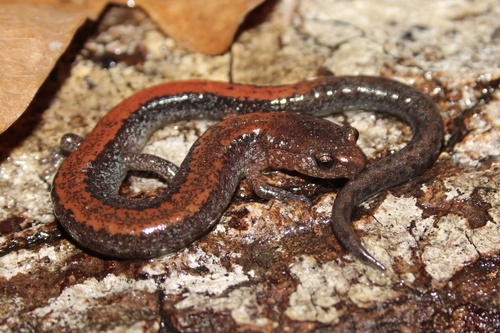
Eastern Red-backed Salamander
The Eastern Red-backed Salamander (Plethodon cinereus) is a lungless, forest-dwelling amphibian, exhibiting striking red and lead color morphs. Thriving in moist environments, it aids ecological balance by controlling invertebrate populations through diet and facilitating nutrient cycling in its woodland habitat.
5-10 years
Lifespan
Least Concern
Conservation Status
Stable
Population Trend
Distribution Range of the Eastern Red-backed Salamander
Plethodon cinereus, commonly known as the Eastern Red-backed Salamander, is native to the northeastern United States and southeastern Canada. Its geographical distribution includes regions ranging from North Carolina to Quebec, extending westward to Minnesota and reaching eastward to the Atlantic coast.
Eastern Red-backed Salamander's Habitat
Environmental Conditions
The Eastern Red-backed Salamander typically inhabits deciduous and mixed forests where it relies on moist microhabitats. These environments maintain high humidity levels and moderate temperatures, necessary for the salamander's skin respiration. The species often seeks shelter under logs, rocks, leaf litter, and other natural debris found on the forest floor.
Ecological Niche
Plethodon cinereus occupies an ecological niche as a terrestrial, lungless salamander that depends heavily on moist environments for cutaneous gas exchange. It is a nocturnal species that plays a role in controlling invertebrate populations by preying on various invertebrates like insects and spiders. Its presence is often an indicator of forest ecosystem health.
Copyright @ Nature Style Limited. All Rights Reserved.
 English
English